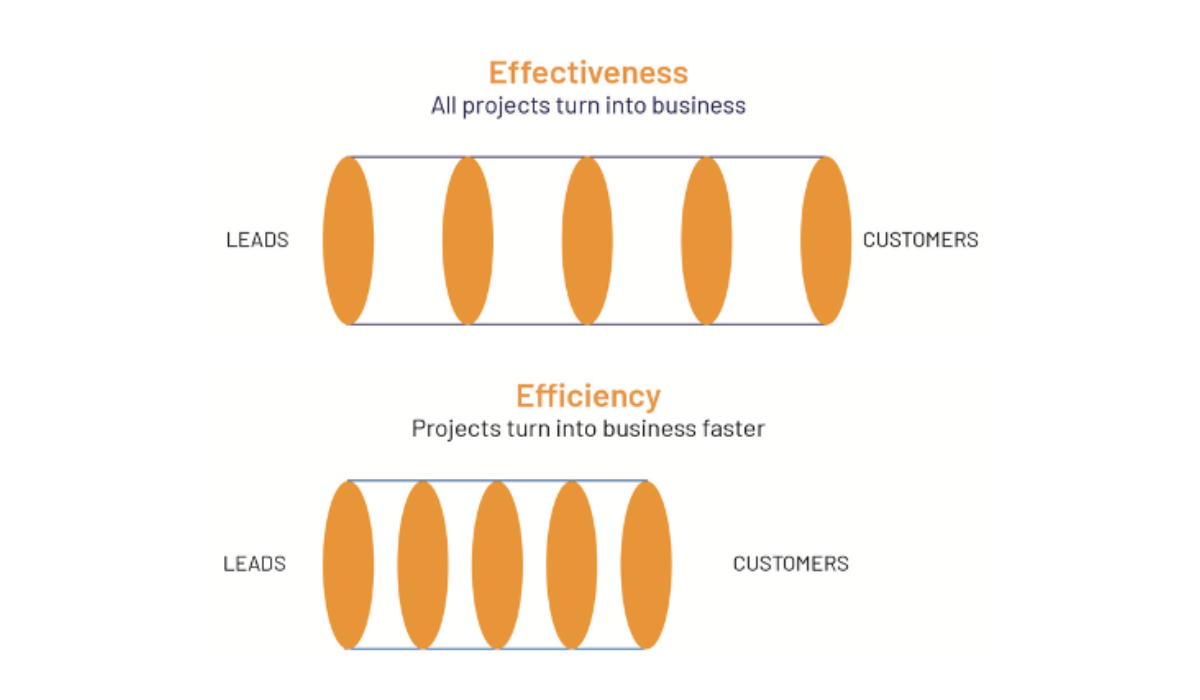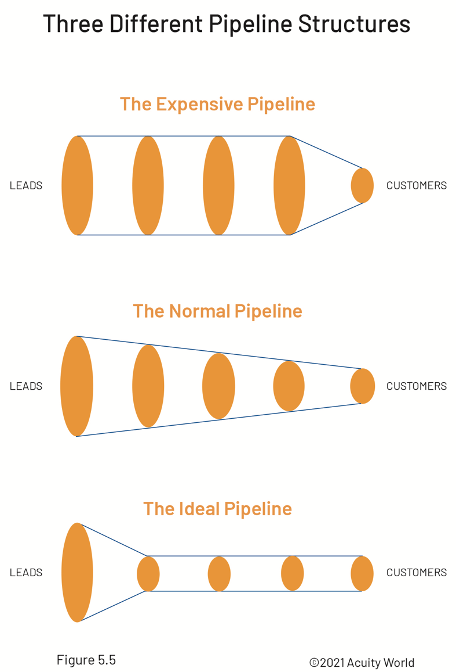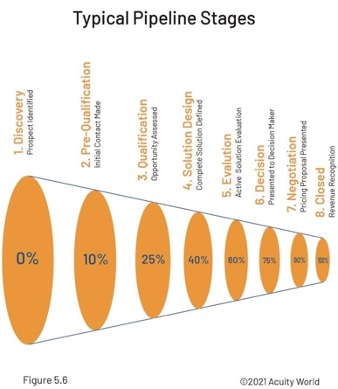Customer Pipeline Management
How to convert a potential customer into a client
Predictable business growth
With quality products and services, the right people, and The Customer Development Strategy, you can generate true value and obtain the right prices from your customers. However, building a truly healthy, profitable, and sustainable business also requires that you can predictably grow your business.
Predictability ensures that your company can deliver what the customers want when they want it. At the same time, predictability ensures that you can maintain trustworthy communication of company results and expectations to the stock market and other shareholders.
This predictability is typically addressed through a CRM and Customer Pipeline Management system. For such a system to work properly, the Customer Pipeline Management system must be designed to reflect how your customers want to buy rather than how your company wants to sell.
And it is equally important that your sales professionals have the sensory Acuity to get the right data from the customers to feed into the system and the Personal Communication skills to deliver the right output in customer interaction.
Stages in the Customer Pipeline
When discussing the customer pipeline above, it is implied that this pipeline will contain all the customer projects which are currently active. A customer project will move through the pipeline, undergoing different stages, showing how far the customers have come in their buying process.
These stages are relatively generic, although with some variations from industry to industry.
A typical customer pipeline could contain the following stages, where we use the terms from The Satisfaction Cycle and The Customer Development Strategy:
1. Raw lead (an identified potential customer that could be interested – but no activity yet)
2. Marketing (awareness and interest created)
3. Qualification (identified Present State+, Desired State++, and Process of the customer, desire to action)
4. Solution design (solution experience has been presented to the customer, desire to action)
5. Decision (the soft buy, desire to action)
6. Negotiation (agreement on terms and conditions, desire to action)
7. Agreement (customer accepts and closes the deal, shopper)
This is the pipeline for Customer Acquisition. The same structure will apply for Customer Development projects, in which the customer is already a Shopper, Client, Member, Ambassador, or Positive Activist. However, in these cases, the first and often the second step (Marketing) can be skipped.
Pipeline Structure
In a perfect world, you would want to have a customer pipeline that is not only effective but also efficient. In this context, effective means that all the customer projects you initiate will be converted into business, which again means that you do not waste time and energy on projects that will not materialize. In a perfect world, you want the same, just faster. When that happens, your pipeline will also be efficient.

Since we do not live in a perfect world, you are likely to be faced with one of the three following pipeline structures.
1. The expensive pipeline – This is the structure you will find in organizations in which the sales professionals lack the skills that would enable them to understand the customers in-depth, and/or the sales leaders refuse to accept reality because they need the pipeline to look a certain
way to satisfy company management. In this case, projects that are not going to materialize are ended too late, leading the company to spend its resources on the wrong projects.
2. The normal pipeline – This is the structure you will see in a normal functioning organization in which the account managers, to some extent, listen to what the customers are telling them they need. The sales leaders are relatively open to their input.
3. The ideal pipeline – This is the structure you will find in an organization where the account managers not only hear what the customer is saying but also get what is before, between, and beyond the words, understanding the customer’s true dream and not only short-term needs. In this case, the account manager will also know early in the process whether their solution will provide real value. This knowledge will qualify the account manager to know early in the process whether their solution will provide real value. This knowledge will qualify the account manager to make a decision early in the process (typically in the Qualification stage) about whether to continue or stop a project. This way, everybody will be using their resources in an optimal way, including the customer.

In many companies, the data that makes up the pipeline is inserted into the CRM system. A certain percentage is assigned to each customer project, depending on the stage it has reached in the pipeline, and this same percentage is, in turn, used to define the probability of winning the project.

This approach is widely used because it provides a sense of overview, knowledge, and security in an easy-to-understand way. A sales forecast can be produced anytime with one push of a button. However, in most cases, this is a false security since the probabilities used in the system are arbitrary and often disconnected from reality. Still, for many companies, despite its flaws, such a system may be better than nothing. This is especially true for companies with a sales force who do not possess the necessary skill set that will enable them to understand what the customer wants and how they want it.
Push or Pull
If the company works from a push mindset in which the company management pushes their sales leaders, who in turn push the account managers, who then, in turn, push the customers to buy what the company wants them to buy, then a system with predefined percentages as described above may also be better than having nothing at all.
In contrast, the fundamental approach we suggest is to work from a pull mindset at all levels. When working with pipeline management, the pull should come from the customer. To get this pull, you need a sales force with the skills, mindset, and sensory acuity to understand what the customer wants and if that matches something you can and want to deliver. Only then does the project qualify as something you can take to the next stage in the pipeline. When you work with this approach over time, you will end up with a healthy customer pipeline that reflects the ideal pipeline described above.
And the better the sales force is at understanding the customers, the more sense it also makes to ask each account manager to assign an individual percentage to the projects in the customer pipeline that can be translated into a reliable estimate of the probability of winning the project. Working this way, you will have a customer pipeline that is rooted in reality instead of in theory, guesswork, and your intentions as a sales leader.
On our Personal Selling Program – PSP, we train the individual salesperson to listen and ask the right questions so that they get information of the highest quality for their pipeline. We train your sales managers to coach their salespeople and hold value-creating review meetings.
